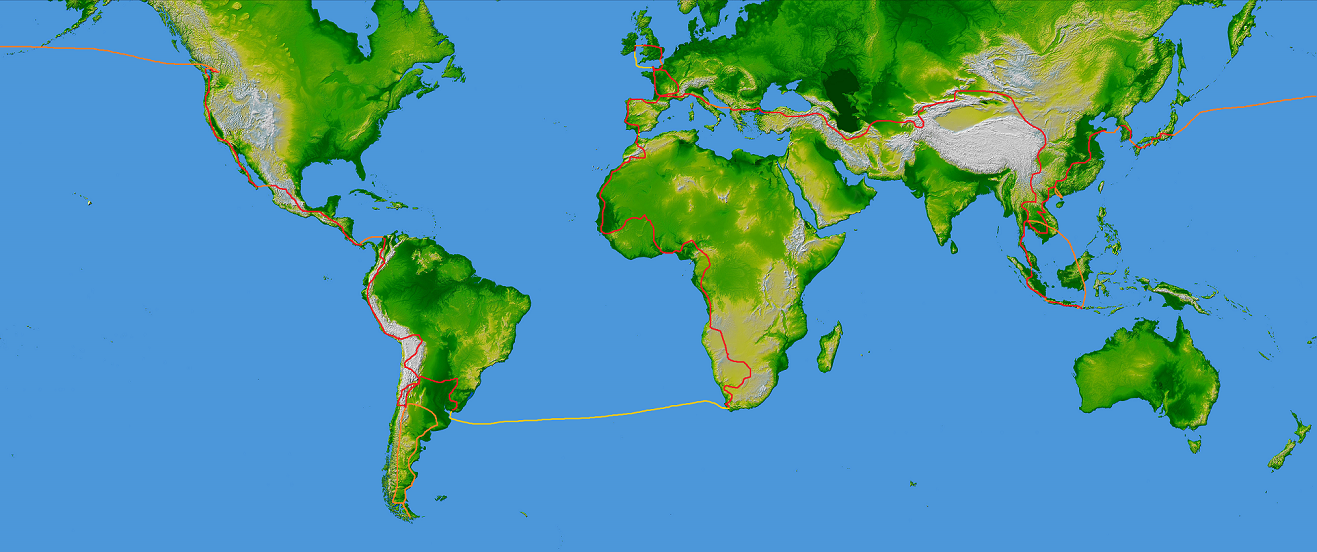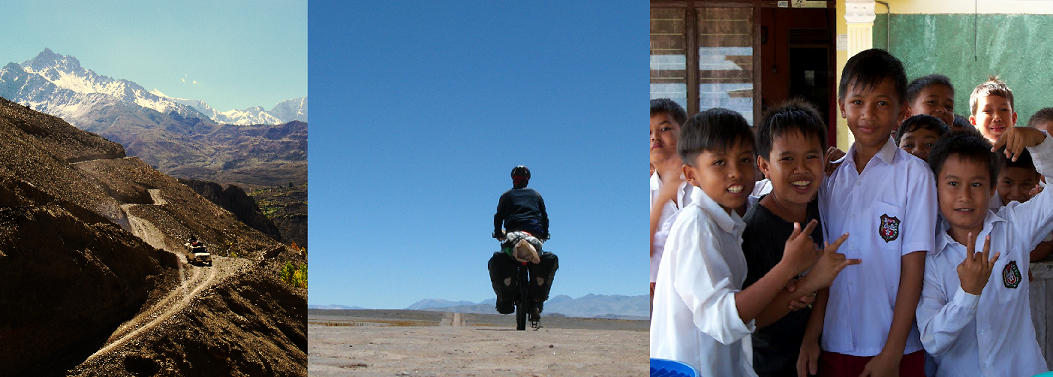My lessons on Korean language, history and where to find the best dog meat soup on the penninsula began while I sat in the shade, shuffling my lunch around on its polystyrene plate with my throw-away waribashi. Jun had spotted a cyclist-in-need when I was manhandling all the gear onto the ferry in Fukuoka and came down to lend a hand and a big smile. As we searched for the open floored dormitory third class room that I had been assigned, he asked if I was geologist, collecting rock samples from each country along the way. When we found the lodgings, fellow passengers were marking their territory with thin mattresses and setting up defensive fortifications with their suitcases.
Jun and I retired to the rear deck with my lunch, watching Fukuoka slip away. Jun was on his honeymoon it turned out, a week's cycling around typhoon whipped and drenched Kyushu. Unfortunately his wife had gotten a bad cold and was resting in their quarters. They were on their way home now, close to Seoul and where I will take the ferry to China from and Jun invited me to visit them when I am in Incheon. When I was done eating we began with the language basics and the cycling essentials - toilets, food and camping options. Jun is a couple of years older than me and works as a sound engineer in Incheon international airport. Like all South Korean men he had to do three years military service before he turned thirty-five, and he spent his time in the late nineties in the navy. He lost friends last year when the North Korean military sank a South Korean gunship, killing 46 sailors in an unprovoked attack. The event was one of the more serious of many that has brought the two long-term adversaries close to all out war. The threat of nuclear weapons and historical involvement of the US, the former Soviet Union and China, however, has always meant that compromises and forbearance won out over desires for revenge for an all out battle on the penninsula that was divided in a deal between the big boys after the Second World War. With the capital of the democratic South lying only 40 kilometres below the so-called demilitarised zone, Jun said that current predictions are that in the event of the North initiating an attack, Seoul would be destroyed in less than five hours. Jun was clear that the presence of the US military in South Korea is essential to the Republic's survival, despite many South Koreans being opposed to their presence.
Back once again on the right hand side of the road in pulsating Busan's Friday night traffic, it was clear that Japan's typically mild-mannered driving habits were a memory. Red lights are merely suggestive and buses and taxis pull up without giving much warning as motorbikes using either the road or footpath depending on which one they think they can squeez along. I found my way to the apartment building where my South African host, Marguerite, lives with several other teachers from many English-speaking nations, including Ireland. My introduction to Korean cuisine and nightlife was swift and fuelled by Korea's national rice-based spirit, so-ju, a vodka-like potion that could be used just as effectively thinning paint.
Busan, South Korea
Pedalled: 50,077 km










